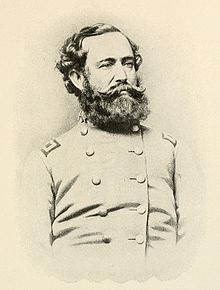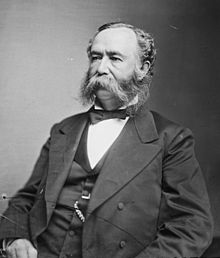In Charleston, change is often a four letter word. More than any American city, Charleston guards its heritage with a passion. A few notable examples include:
- 1902 - the Powder Magazine (17 Magazine St) was preserved.
- 1911 - Susan Pringle Frost began purchasing the slums along eastern Tradd Street for renovation.
- 1913 - Congress authorized the transfer of the Old Exchange Building (122 East Bay St.) to the Daughters of the American Revolution.
- 1920 - The Society for the Preservation of Old Dwellings was established.
- 1924 - Joseph Manigault House opened as the first house museum, and the Heyward-Washington House was purchased by the Charleston Museum.
- 1931 – Charleston established the Board of Architectural Review and established the Old and Historic District.
These are only a few of the official acts the city has taken to protect its buildings. But when it comes to protecting the social and cultural heritage of the Holy City it’s not as easy as just passing a city ordinance. After all, the state dance is the Shag, a watered down caucasian version of the much more challenging African-inspired the Charleston. But worse of all is the gradual deterioration of one of Charleston’s longest traditions – merriment!

No more street parties on St. Patrick’s Day. No smoking in ANY building in Charleston. No tailgating at Citadel football games (I guess fireworks at 11 pm after a baseball game in a park named after the current mayor is less disruptive). The only approved street “parties” these days are politically correct cultural events like the Art Walk (even then you can’t carry your topless plastic cup from site-to-site, the MOJO Arts Fesitval and various SPOLETO and Piccolo Spoleto happenings.

By the 1980s all of the “adult clubs” and “massage parlors” that used to be located around the Market area were pushed to the extreme northern end of the city. During the 1990s as the price of real estate began to rise in the downtown area, a new crop of self-important persnickety puritans arrived and slowly strangled the real social character of Charleston. After all, we can’t allow blue collar drunks on the streets of the Holy City having fun, can we?

Well, yes we can. Charleston is called the Holy City due to its number of churches, not due to the behavior of the locals. Maybe if these persnickety puritans had taken the time to learn the “real” heritage of their new city BEFORE they decided to purchase that million dollar home, things might be different. A quick primer on Charleston social behavior:

The city’s namesake, King Charles II was called the Merry Monarch. English historian Samuel Pepys described Charles’ court “as there being so much . . . swearing, drinking and whoring that I do not know what will be the end of it.” Charles admitted to fathering “more than 35 bastards.”
One of the most important men in the establishment of Carolina was Lord Anthony Ashley Cooper. John Dryden noted that Cooper was a man who “loves fumbling with a Wench, with all his heart.” Charles II referred to Cooper as “the greatest whoremaster in England.”
When the first settlers arrived in April 1670, the cargo included 12 tons of beer and 50 barrels of brandy. Seven months later, Captain Joseph West complained that many of the settlers “were so addicted to the Rum, that they will do little whilst the bottle is at their nose.”
In 1768, one hundred and thirty-two taverns were licensed in Charles Town - one for every five adult males. Rev. Charles Woodmason complained that each Saturday so many people in Charleston became so “drunk and stupid, as to be utterly unfit to attend Public Worship on Sunday.” Francis Asbury preached at Old Bethel Church in 1789 and called Charleston the “Sodom and Gomorrah of the South.”
The upper floors of the former Planters Hotel (present location of the Dock Street Theatre) were reserved for “gentlemen and their private guests.” Richard Hofstadter noted: “The Charleston hedonistic life put the other seaboard towns in the shade.” John C. Calhoun became one of Charleston’s most treasured citizens despite the fact that he loathed the city. He called Charleston “intemperate and full of debauchery.”

The Reverend Arthur Crain wrote in 1900: “The city is wide open. No liquor law is being enforced. Drunkenness greets us on every hand. I can meet more drunken men in a 15-minute walk in Charleston than I could in New York, Chicago or any other city.” Six years later the state of South Carolina granted 297 liquor licenses - two hundred and thirteen of them were issued in Charleston. Fifteen bars were located around City Hall and nineteen operated within a block of St. Philip’s Church. During Prohibition, more than 20,000 South Carolinians made a living as a bootlegger.
In October 1942, Charleston police raided Market Street and arrested 626 prostitutes – 346 white and 280 black. Nearly half were found to be infected with venereal disease.
So, welcome to the REAL Charleston, named after the Merry Monarch who fathered more than 35 bastards. The city’s two main rivers are named after “the greatest whoremaster in England,"and until recently we were renowned to be full of debauchery and loose and idle women.
As we approach another summer tourism season I urge everyone to help preserve one of Charleston’s most important heritages: eat drink and be merry, as often as possible. Or, if you’re feeling particularly inspired, eat, drink and be with Mary! And for you cross-dressers – go ahead and eat, drink and BE Mary. After this is the former Sodom and Gomorrah of the South.









 MAY 1, 1865. More than 10,000 people gathered for a parade, to hear speeches and dedicate the graves of Union dead in what is now Hampton Park in Charleston, SC.The group consisted of several thousand black freedmen, northern missionaries and teachers who had arrived in Charleston to teach in freedmen schools post-War.
MAY 1, 1865. More than 10,000 people gathered for a parade, to hear speeches and dedicate the graves of Union dead in what is now Hampton Park in Charleston, SC.The group consisted of several thousand black freedmen, northern missionaries and teachers who had arrived in Charleston to teach in freedmen schools post-War.


 In 1660, in what is known as the English Restoration, General George Monck met with Charles and arranged to restore him in exchange for a promise of amnesty and religious toleration for his former enemies. On May 25, 1660, Charles landed at Dover and four days later entered London in triumph. It was his 30th birthday, and London rejoiced at his arrival. In the first year of the Restoration, Oliver Cromwell was posthumously convicted of treason and his body disinterred from its tomb in Westminster Abbey, beheaded and hanged from the gallows at Tyburn. It was referred to as the "twice dead body of Cromwell."
In 1660, in what is known as the English Restoration, General George Monck met with Charles and arranged to restore him in exchange for a promise of amnesty and religious toleration for his former enemies. On May 25, 1660, Charles landed at Dover and four days later entered London in triumph. It was his 30th birthday, and London rejoiced at his arrival. In the first year of the Restoration, Oliver Cromwell was posthumously convicted of treason and his body disinterred from its tomb in Westminster Abbey, beheaded and hanged from the gallows at Tyburn. It was referred to as the "twice dead body of Cromwell."





















